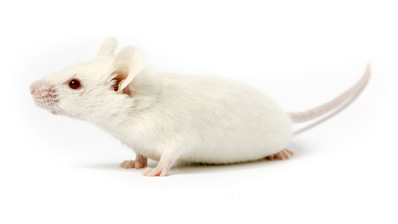1. Be prepared
Before you receive your mice, know the basic mouse-handling techniques. Handle mice gently and as little as possible, especially when females are pregnant, close to delivering or have new litters. You can start with reading the Handbook on Genetically Standardized Mice and contacting your animal facility core.
2. Choose the right room for the mice
According to their degree of immunological competency or deficiency, you may need rooms with different health levels. For example, severely immunodeficient mice require a room with very high health status because they are extremely sensitive to infection by a wide range of normal pathogens and opportunistic organisms. Even commensal bacteria can cause illness in some of the most severely immune-compromised mice, such as NSG (NOD.Cg-Prkdcscid Il2rgtm1Wjl/SzJ – 005557). For other mouse models, a “dirtier” room is necessary for the mice to develop an appropriate phenotype: for example colitis in Il10-deficient mice.
Even commensal bacteria can cause illness in some of the most severely immune-compromised mice, such as NSG (NOD.Cg-Prkdcscid Il2rgtm1Wjl/SzJ – 005557). For other mouse models, a “dirtier” room is necessary for the mice to develop an appropriate phenotype: for example colitis in Il10-deficient mice.
3. Food and water supplies
Most JAX® Mice do well when fed standard, 6% fat chow diets – at JAX we use LabDiet® 5K52 or LabDiet ® 5K67. Many wild-derived inbred mice, however, breed better when maintained on lower-fat diets. Some mice, such as C57BL/6J (000664), must be maintained on specialty diets in order to develop specific phenotypes, such as diet-induced obesity or diet-induced atherosclerosis. Make sure you have the required diets ready if you will work with such diet-induced models.
Water should be accessible at all times. Keep in mind that JAX® Mice are used to water bottles. If your facility has an automatic water supply, make sure to provide them with a water bottle during the first week after arrival until they get used to the new watering system. The Jackson Laboratory has acidified the drinking water for the mice for more than 25 years to successfully control Pseudomonas species. Water in our mouse rooms is acidified with HCl to achieve a pH of 2.5-3.0.
4. Acclimation period
It is important to give newly imported mice at least one week to acclimate to their new surroundings before you start your experiments. Remember to practice the following tips:
• Minimize noises and vibrations: these can cause stress and decreased breeding performance.
• Minimize odors: perfumes and other strong odors may interfere with breeding and induce stress.
• Use gloves and forceps: minimize scents transferred from cage to cage by changing gloves frequently, and disinfecting both gloves and forceps between cages.
5. Add a little luxury to the cages
Don’t underestimate the benefits of enrichment to alleviate stress and improve breeding. Some examples are: Nestlets (Animal Specialties and Provisions, LLC), NestPaks (WF Fisher and Son), and Shepherd Shacks (Shepherd Specialty Papers). UC San Francisco has several good examples of affordable rodent-enrichment options. Even placing some chow on the bottom of the cage may help.
Anticipating the arrival of mice to take your research in a new direction is an exciting experience. But it can be a bit daunting as well, especially if you’ve never worked with laboratory mice before. The more you know about a particular mouse model, the smoother your research is going to go. Check out our Technical Support website for more useful tips. Help is available there 24/7!